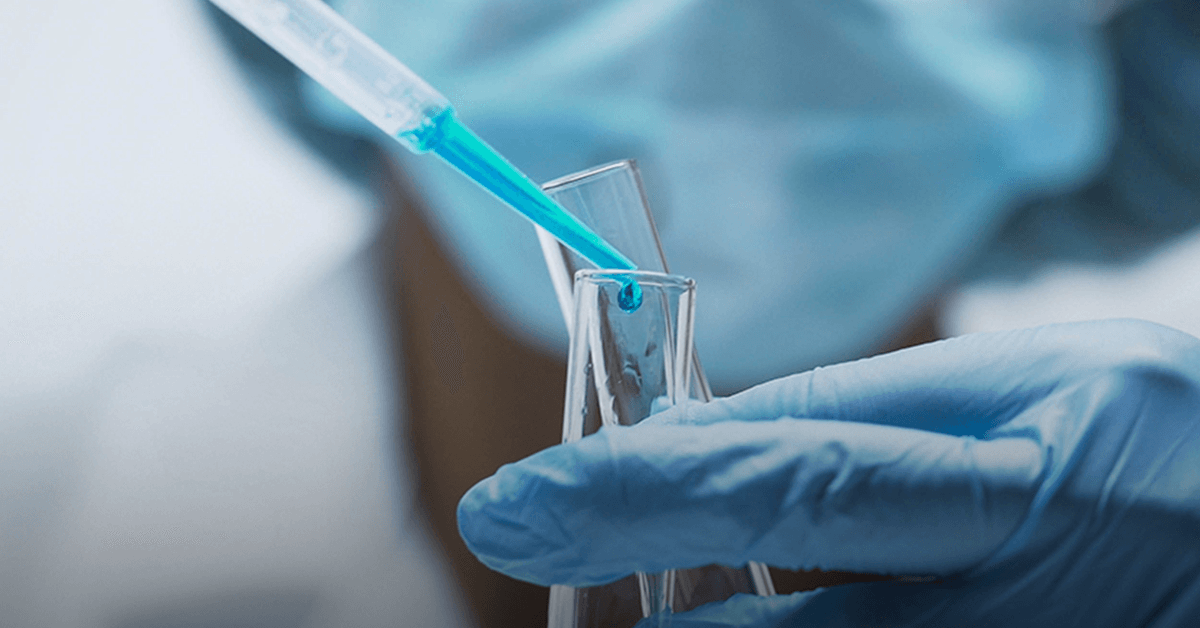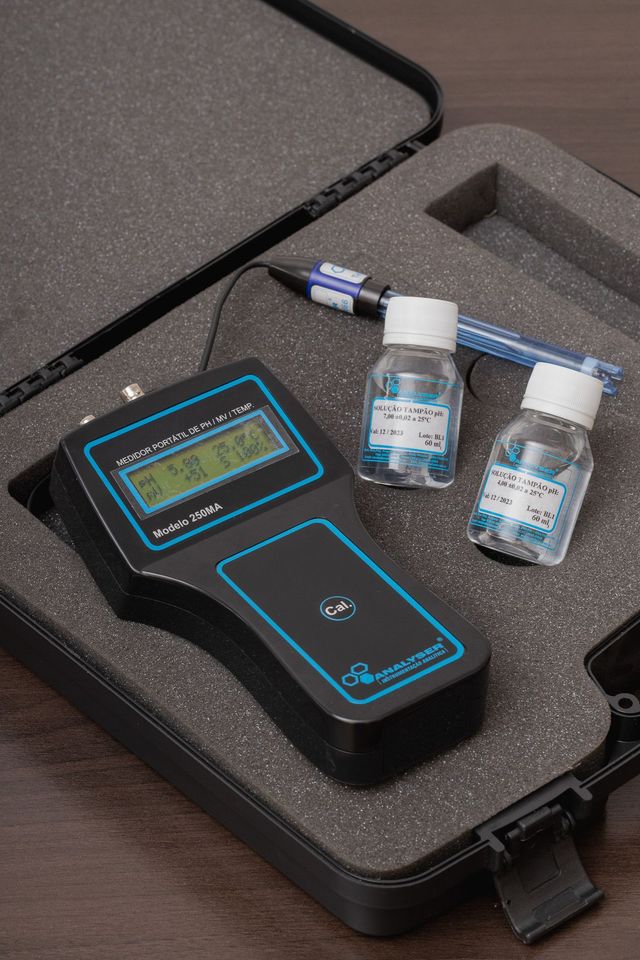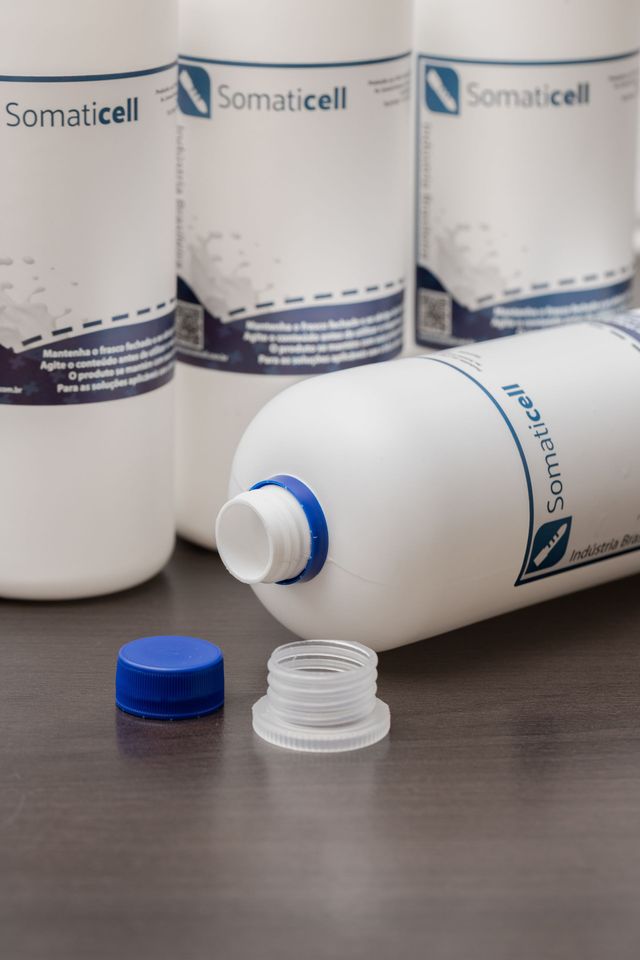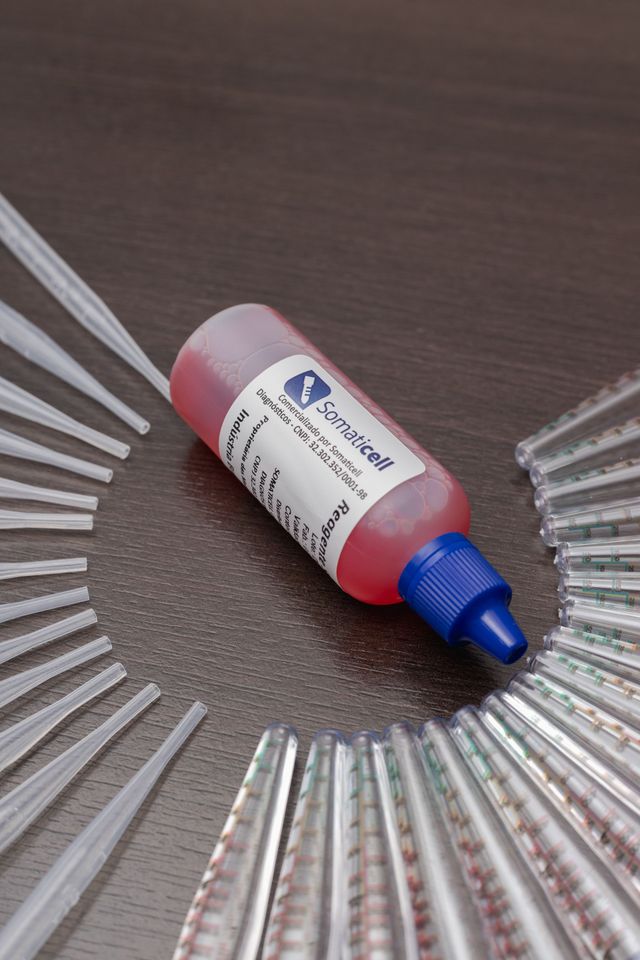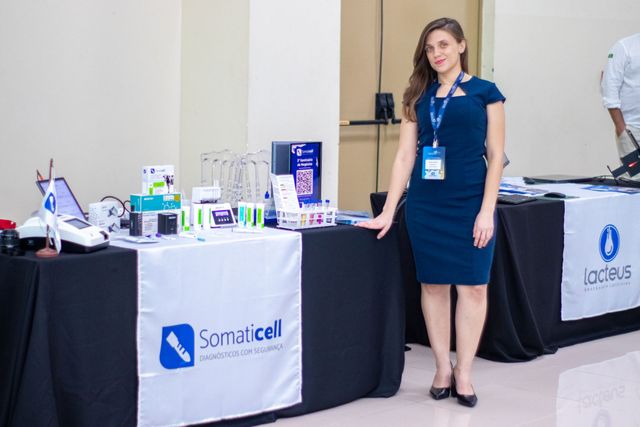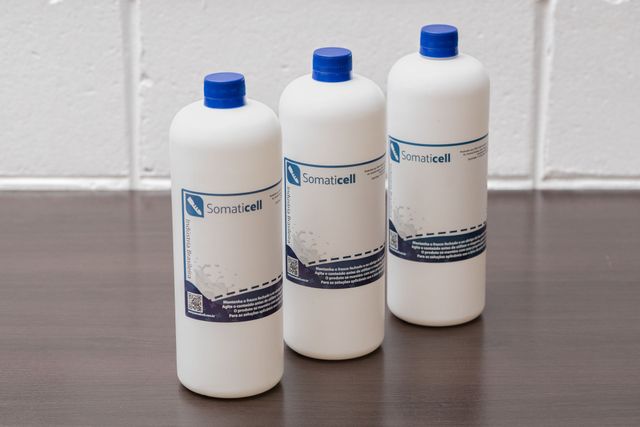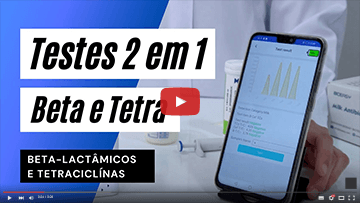CCS test in the milk producer: understand!
The CCS test in the milk producer and its importance to ensure the quality of the milk.
Os produtores de leite se esforçam para manter o leite com alta qualidade, o que contribui para uma oferta segura bem como sustentável de alimentos. Em muitos países é normal que uma verificação individual oficial da Contagem de Células Somáticas (CCS) de cada animal seja feita pelo menos uma vez por mês. Essas checagens são muito úteis, pois fornecem aos produtores dados indicativos acerca da saúde do rebanho e da qualidade do leite, informações estas altamente valiosas para prevenir infecções por mastite bovina.
A contagem de células somáticas do leite reflete se há ou não um quadro de mastite, tendo implicações diretas na qualidade do leite, seu sabor e o seu potencial de ser transformada em outros produtos lácteos(como iogurte ou queijo).
Dairy producers' contracts with their suppliers often involve various CCS "thresholds", and this is important as, essentially, a lower CCS indicates better animal health.
Monitoring CCS is important, therefore, because as somatic cell numbers increase, milk production is likely to drop, as will milk quality. This is primarily due to the damage done to the milk-producing tissue in the breast during infection, as well as the toxins produced in the process, particularly when epithelial cells are lost. These are not all the losses that this lack of control can cause. Follow this article and learn about the importance of the CCS test for dairy farmers!
Somatic cell count, an indicator of milk quality
As early as the beginning of the 20th century, milk and dairy producers were looking for a way to measure the quality of milk. They could not improve the quality of care for their cows if they did not have an effective measure to determine positive as well as negative changes in the state of health of the animals and also of the milk.
Counting the number of cells in milk has become the standard method of measuring milk quality and is called the somatic cell count, CCS.
The Somatic Cell Count (SCC) is therefore one of the main indicators of milk quality. Most somatic cells are leukocytes (white blood cells) - which become present in increasing numbers in milk usually as an immune response to a mastitis-causing pathogen.
The somatic cell count is a determining factor for detecting bovine mastitis. For when dairy cows produce a high number of somatic cells, beyond what is considered normal, it is likely that they have the disease.
A reference value to indicate a regular amount of somatic cells in a cow varies between 50.000 and 200.000 per ml. When this value is above what is considered normal (more than 250.000) it may mean that the animal is contaminated.
The presence of cells in milk is one of the important protection mechanisms of the mammary gland. Furthermore, we can consider it as a surveillance function in the non-infected gland. However, when these cells appear in increased numbers, it is indicative of infection.
Macrophages and PMN
Macrophages and PMN are phagocytic cells that engulf and kill bacteria. Lymphocytes include B cells and T cells that play key roles in specific immune reactions that can follow the initial response to infection.
An inflammatory response (mastitis) is initiated when bacteria enter the mammary gland through the milk duct and multiply in the milk. Bacteria or their components can have a direct effect on breast function and interact with milk cells.
So when you boil it all down, the somatic cell count is a measure of the activity of the cow's immune system. The lower the CCS, the less white blood cells in the milk, which means the cows are less stressed and have less invasive microorganisms.
What is mastitis?
Mastitis is a mammary inflammation that affects dairy cows, reducing the ability of their epithelial cells to produce milk, or completely destroying them. Unresolved infections, even those that apparently cause minor (subclinical) increases in somatic cell count (SCC), will result in the loss of milk production in an affected cow every day of her lactation. However, a cow with subclinical mastitis has the same feed, work and expense as other cows, whether it is achieving optimal production or not.
Mastitis causes destructive inflammation in the breast, even when the inflammation is mild. In addition to the lost incentives for quality milk, the costs of treating clinical cases, lower reproductive fertility, and reduced longevity and welfare of affected cows, mastitis also causes pernicious day-to-day loss of milk.
Você também pode obter mais informações do que é mastite e como controlá-la clicando
aqui.
How else does on-farm CCS testing help the producer?
Somatic cell counts don't always indicate that a cow is suffering from an infection, but they are indicators that she could have something. CSS is like checking your cholesterol. It is an indicator of milk quality and breast health. Both the overall absolute number and proportion of the various types of leukocytes in milk vary with a number of factors including the stage of lactation, time of year, diurnal variation, frequency and intervals of milking, and stress. But the most significant changes are seen in response to infection.
Increased CCS indicates an immune response most commonly to infection, however it is also part of that immune response and confers some protection. The distribution of somatic cells in a healthy mammary gland is normally: macrophages (65%), with other leukocytes including lymphocytes (10 to 25%) and neutrophils (0 to 10 percent). The milk from an infected gland, however, has more than 90% of neutrophils, due to the greater influx of these defense cells to the mammary gland and, consequently, to the milk. Other factors:
SCC is expressed as a number of somatic cells per ml of milk and can logically be used as an indirect measure or indicator of udder health (with the caveat that factors other than infection can affect SCC), as most Somatic cells are made up of immune system defense cells that are produced in greater numbers by an infected gland.
For these reasons, changes in CCS are so important to measure: the implications and financial impact of increasing CCS in terms of reduced yield and quality really do impact on a producer's income. Here are other important factors that can be observed from a CCS test:
- Age – Older cows tend to have more cells present in their milk, while younger cows have less.
- Lactation stage – Cows that produce less milk and are later in their lactation have fewer cells present;
- Stress – A more stressed cow will show higher CCS;
- Season – CCS levels are generally lowest in a clean, dry, comfortable environment. Wet weather will raise the cell count;
- Generally the CCS is higher in winter;
- Injury – an injury, cut, etc. temporarily raises the number of cells until the cow heals;
- Indirect causes – poor milking procedures or poor breast hygiene are examples of indirect factors that can contribute to higher CCS.
What is a Normal CCS?
Since lower is better, you might think that having a measurement of 0 somatic cells would mean that the milk is of perfect quality, but this is actually not the case.
If you have a cow producing milk with 0 somatic cells, your cow may not be from this planet. Your cow may not be alive because cells are a normal part of biological systems. Zero somatic cells would mean your cow is not replicating new cells. It is normal for cows to generate cells, and to have white blood cells present in milk.
So what would be considered a normal CCS level?
The cell count for "normal" milk is almost always less than 200.000 cells/ml (lower for younger cows). Higher counts are considered abnormal and indicate probable infection. Higher counts are also associated with decreased production.
Keep CCS in check with the CCS test
Without a management strategy that includes actively monitoring individual cow CCS and new infections, you are taking a financial risk. Make sure you know your levels and have protocols in place to identify mastitis pathogens and treat them.
CCS impacts almost every aspect of the entire milk and dairy production chain, so it is important to think beyond mastitis risk when thinking about CCS. This is a critical mindset shift primarily because of the impact CSS has on the key drivers of profit.
High CCS is associated with reduced reproductive performance. This is due to the negative physiological effect that high levels of CCS have on a cow's reproductive system. Lower reproductive performance means lower net farm income and ultimately increased replacement costs and reduced profit.
Elevated levels of CCS have also been associated with higher death rates. A broader review of the data shows that this is not necessarily due to mastitis alone, but cows in herds with high CCS are being lost for many reasons. So CCS is really a measure of overall animal husbandry skills. Farmers who manage CCS well are generally better at managing all types of animal health risks.
Managing CSS to lower levels presents a huge opportunity to improve your long-term profitability.
Final considerations on the CCS test in milk production.
Today's dairy industry is challenging. It takes business sense, strong instincts, dairy production know-how, innovation and continuous improvement to succeed. Work, health management, reproductive efficiencies and genetics are just a short but critical list of things that demand your attention and offer enormous opportunities for improvement. What if you could prioritize the items that will have the biggest impact on your profitability?
One of the drivers of the farm's net income identified by the study is the impact of the somatic cell count (SCC), as it is an indicator of general performance, management and livestock. This high rate is associated with lower milk production, reduced pregnancy rates and greater loss of death.
CSS touches almost every part of dairy production and processing. Its broad impact on your operation means reducing CCS provides an excellent opportunity to increase profit.
The key to keeping CCS levels in check is through a proactive and thorough monitoring program. Thus preventing new infections and reducing the overall risk of mastitis.
A solution for your business
To help you do just that, we have the solution you need. We have the most modern method for diagnosing mastitis, which can be performed simply and quickly:
Com um teste indireto e rápido para diagnosticar a mastite e quantificar as células somáticas no leite com base no aumento da viscosidade do leite, diretamente proporcional ao nível de mastite no gado. Com o controle da mastite por meio de contagem de células somáticas no campo, usando o teste da Somaticell, você reduz, desse modo, os custos de medicamentos, perda de tetos, além de reduzir o risco de descarte de leite.
In addition, the test has the complementary effect of increasing the productivity of your business: Production losses can reach 32% when values are above one million somatic cells per milliliter of milk, you will not want to lose managing it, right?
Solicite agora mesmo um orçamento para um diagnóstico da mastite a nível clínico e subclínico em menos de 3 minutos, aplicado diretamente no campo, com precisão de 97% cientificamente comprovada.
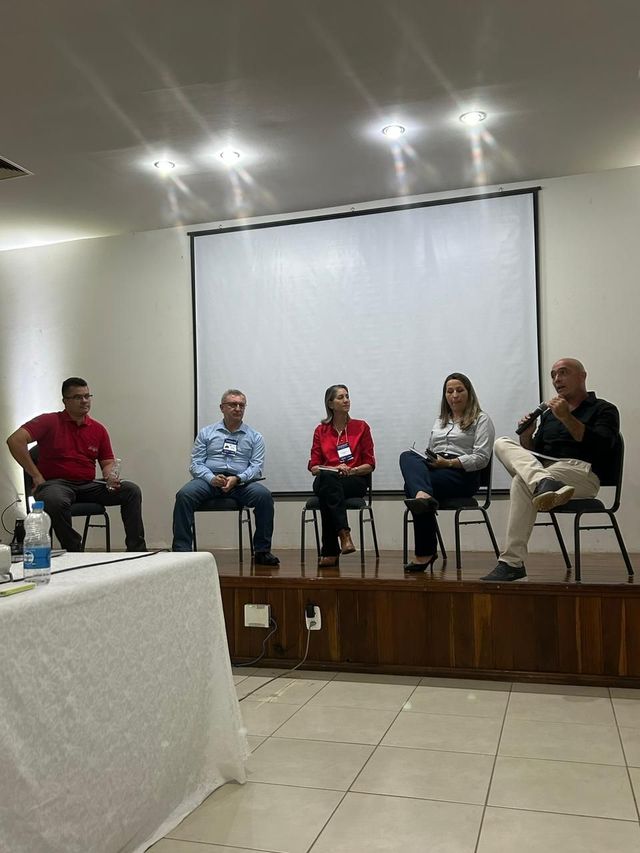
Discover our App
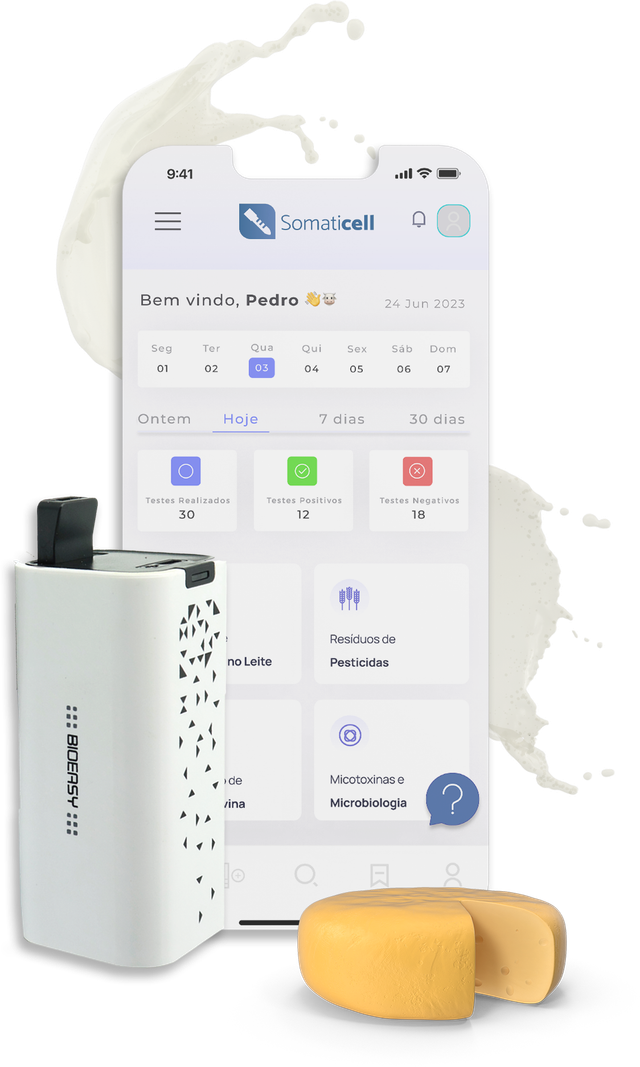
Our Educational Videos
Somaticell on Social Networks


